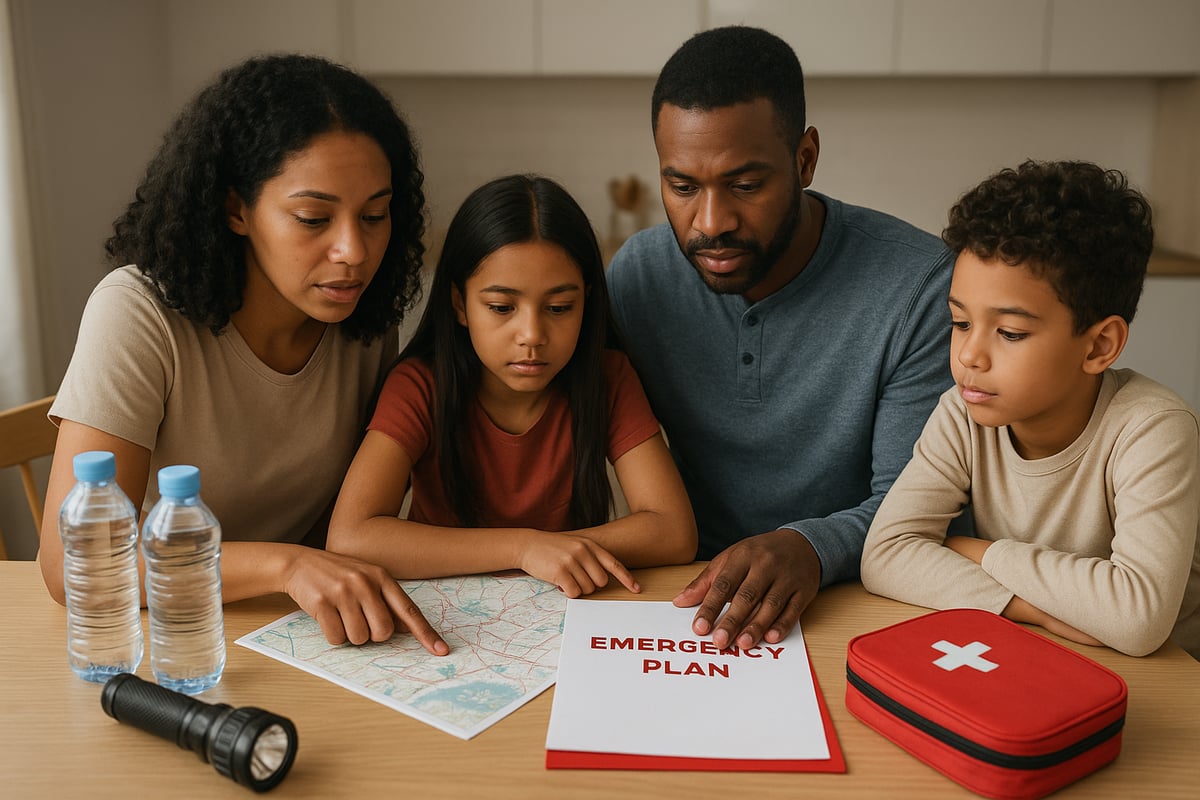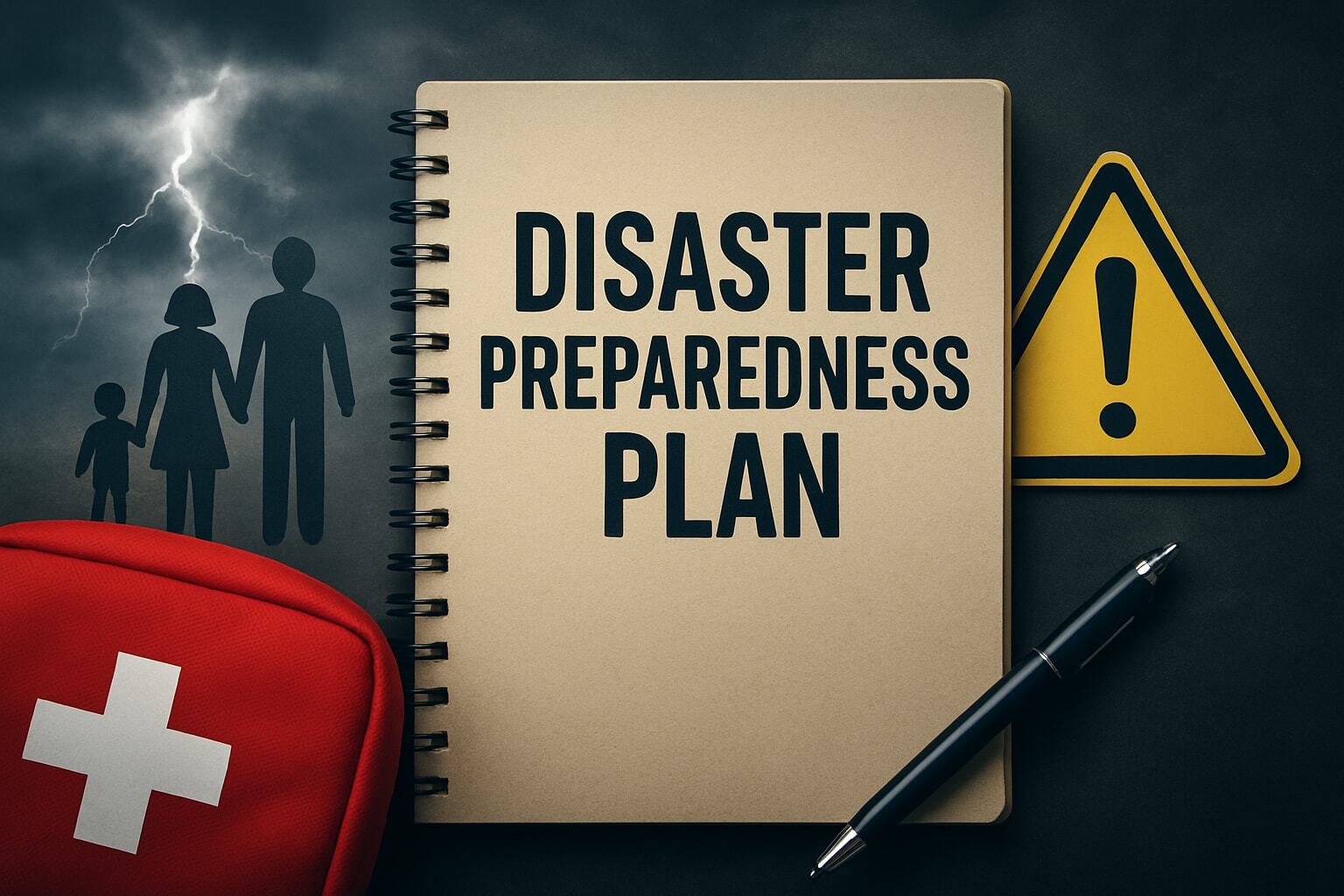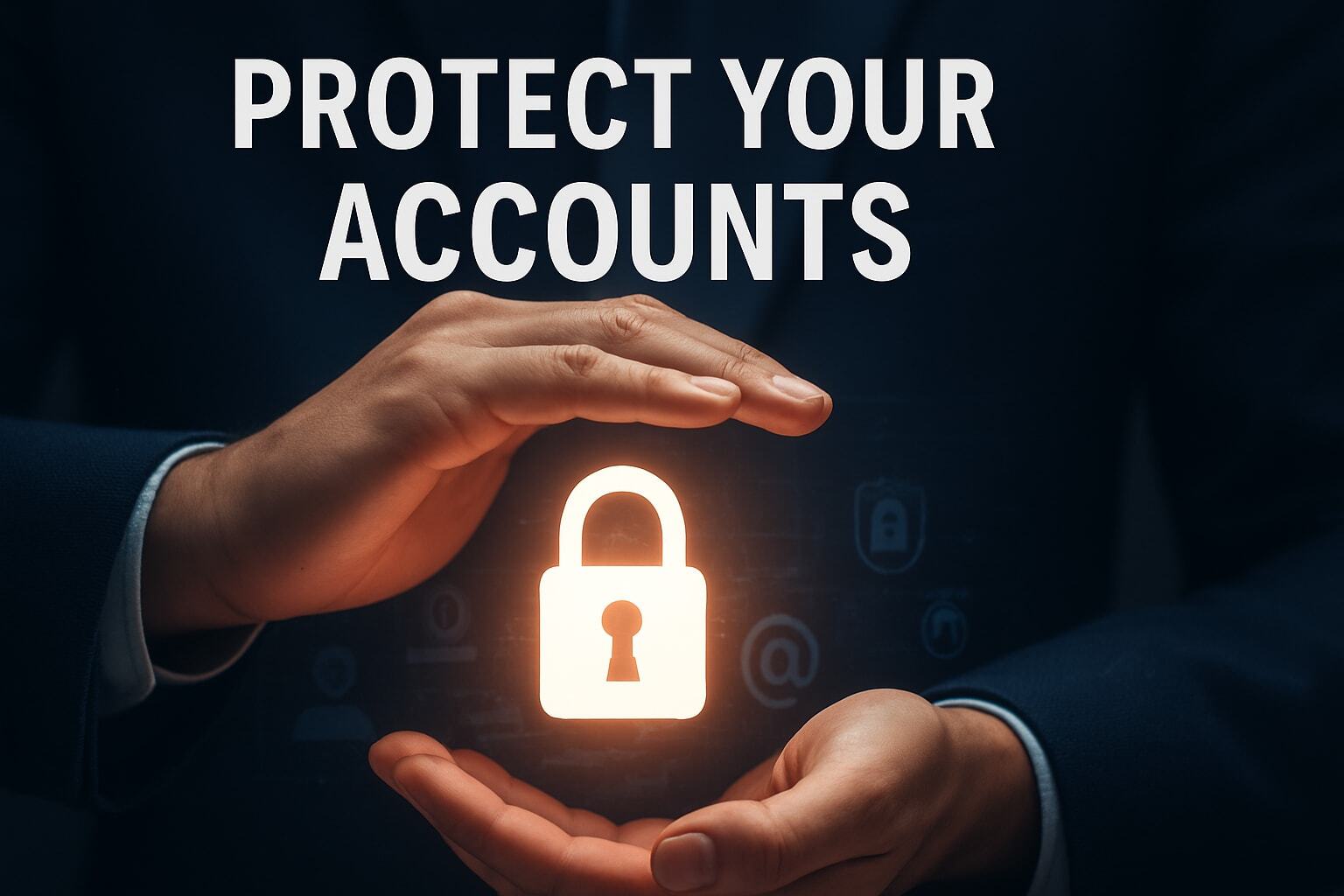Disaster Preparedness Plan for Family: The Essential 2025 Guide
Imagine a sudden disaster disrupting your daily life. Would your loved ones know exactly what to do next? The reality is, having a disaster preparedness plan for family can mean the difference between confusion and calm, especially as threats continue to evolve in 2025.
This guide is designed to help families build a comprehensive strategy for any emergency. You will learn how to assess risks, set up reliable communication, manage supplies, plan evacuations, and protect essential documents. With real-world examples and expert tips, you will gain the confidence to safeguard your family and act when it matters most.
Understanding Disaster Risks for Families
Understanding the risks your family faces is the foundation of an effective disaster preparedness plan for family. Every household is exposed to a unique mix of threats, and being aware of them is crucial for making informed decisions and staying safe.

Types of Disasters Families Face in 2025
Modern families must prepare for a wide range of hazards when building a disaster preparedness plan for family. Natural disasters like hurricanes, wildfires, floods, and earthquakes remain significant threats. Human-made events, such as power outages, cyber-attacks, chemical spills, and pandemics, add new layers of complexity.
Climate change has intensified the frequency and severity of many disasters. Localized risks also matter. For example, families in coastal regions face hurricanes, while those in the West may contend with wildfires. In 2023 alone, wildfires displaced over 1.2 million families in the US, highlighting the importance of tailored planning.
Assessing Your Family’s Unique Vulnerabilities
No two households are alike, so a disaster preparedness plan for family must reflect your specific vulnerabilities. Consider your home’s structure and location, such as whether you live in a flood zone, high-rise building, or remote area. Family composition is another factor: Do you have young children, elderly relatives, pets, or members with special needs?
Work, school, and daily commute patterns can influence your risk. For instance, families with infants require specialized supplies and backup plans for feeding and care. Evaluating these factors ensures your plan addresses the real challenges your household could face.
Importance of Risk Awareness and Education
A disaster preparedness plan for family only works if everyone understands the risks and knows what to do. Staying informed through trusted sources like NOAA, FEMA, and local emergency alerts is essential. Community resources, such as preparedness fairs and neighborhood meetings, can boost your family’s readiness.
Despite rising threats, only 39% of Americans have discussed disaster plans with their families, according to the Red Cross (2022). Regular conversations and practice drills help close this gap, making sure that every family member is prepared when it counts most.
Common Myths and Mistakes in Disaster Preparedness
Many families fall into common traps when creating a disaster preparedness plan for family. Some believe, “It won’t happen to us,” leading to inaction. Others rely too heavily on public services, which may be overwhelmed during major disasters. Digital and cyber threats are often ignored, leaving families vulnerable to information loss or communication breakdowns.
Supply needs are frequently underestimated. FEMA reports that 60% of families lack even a basic three-day emergency supply. Avoiding these pitfalls starts with honest self-assessment and realistic planning.
Building a Family Risk Profile
The final step in understanding disaster risks is creating a detailed risk profile for your household. Start by making a checklist of likely threats in your area. Map out evacuation routes and identify safe zones, both at home and in the community. Document any medical or logistical needs specific to your family.
Online tools and resources can simplify this process. For a step-by-step approach, consult this emergency planning process for families to ensure your disaster preparedness plan for family covers every critical detail. A thorough risk profile empowers your family to respond confidently, no matter what challenges arise.
Step-by-Step Guide to Building Your Family Disaster Preparedness Plan
Building a disaster preparedness plan for family is not just about buying supplies. It is a comprehensive process that prioritizes safety, communication, and adaptability. By breaking down the process into actionable steps, families can confidently face any emergency in 2025.

Step 1: Establishing Emergency Communication Protocols
A disaster preparedness plan for family starts with clear communication. Develop a contact list including phone numbers, emails, and social media handles for every family member. Assign one out-of-area emergency contact as a central relay point.
During disasters, text messages are often more reliable than calls due to network congestion. For example, during the 2021 Texas blackout, texting was three times more effective for families to reconnect. Make sure everyone knows how to communicate if separated, and practice these protocols regularly.
Step 2: Assembling Emergency Supply Kits
Every disaster preparedness plan for family should include a well-stocked emergency supply kit. Essentials include water, non-perishable food, first-aid supplies, flashlights, batteries, and multipurpose tools. Remember to customize kits for infants, seniors, pets, and anyone with special medical needs.
Keep track of expiration dates and rotate supplies as needed. For a comprehensive list of must-haves, review the Family disaster kit essentials guide to ensure nothing is overlooked.
Step 3: Planning Evacuation and Shelter-in-Place Strategies
A disaster preparedness plan for family must address both evacuation and shelter-in-place scenarios. Map out multiple evacuation routes from your home and identify nearby community shelters. Practice fire and earthquake drills so everyone knows what to do under stress.
Prepare your home for shelter-in-place by securing windows and doors. Teach family members how to respond to different alerts, ensuring everyone is comfortable with the plan.
Step 4: Assigning Roles and Responsibilities
Assigning clear roles is essential for a disaster preparedness plan for family. Decide who will grab the emergency kit, who contacts relatives, and who manages pets. Train all family members in basic first aid and the use of fire extinguishers.
Including children in drills empowers them and reduces panic. Keep a printed list of responsibilities in your emergency plan folder for quick reference.
Step 5: Documenting and Protecting Critical Information
Storing and protecting important documents is a vital part of any disaster preparedness plan for family. Collect IDs, insurance papers, medical records, and emergency contacts. Store physical copies in waterproof pouches and consider digital backups for extra security.
During Hurricane Ida, many families lost access to vital documents, delaying recovery efforts. Make sure your documents are organized and accessible in an emergency.
Step 6: Regular Review and Practice
A disaster preparedness plan for family is only effective if it is current and practiced. Schedule annual reviews to update contact information, supplies, and roles. Practice evacuation and shelter-in-place drills at least once a year.
Learn from recent disasters and adapt your plan as needed. Encourage all family members to provide feedback after drills to improve your preparedness.
Step 7: Integrating Technology and Apps for Preparedness
Modern technology can enhance your disaster preparedness plan for family. Download emergency alert apps from FEMA, the Red Cross, or local agencies to stay informed. Use family locator apps and digital checklists to coordinate during a crisis.
Cloud storage solutions can safeguard digital copies of your emergency plan and critical documents. Regularly update your apps and review new tools that support family safety and communication.
Protecting and Accessing Family Documents During Disasters
Unexpected disasters put families at risk of losing more than just their homes. Vital paperwork, such as IDs or insurance policies, can vanish in an instant without proper planning. As part of your disaster preparedness plan for family, safeguarding documents is as critical as storing food or water.
Why Secure Document Storage is Critical
Losing key records in a flood, fire, or theft can delay recovery for weeks. After a disaster, you may need identification to access shelters, file insurance claims, or receive medical care. In fact, 30% of disaster victims face significant delays because their documents are missing or damaged.
A robust disaster preparedness plan for family must address document security. When essential paperwork is protected, families can prove their identity, access resources, and start rebuilding with fewer obstacles. Consider the peace of mind that comes from knowing your critical information is always within reach.
Physical vs. Digital Document Storage Solutions
There are two main strategies for document protection: physical safes and digital vaults. Each method offers unique strengths and weaknesses for your disaster preparedness plan for family.
|
Storage Type |
Pros |
Cons |
|---|---|---|
|
Physical Safe |
Fire and water resistant, accessible offline |
Can be lost or damaged, limited capacity |
|
Digital Vault |
Remote access, easy to update, encrypted |
Needs power and internet, security risk if not managed properly |
A combination of both methods provides redundancy. Store originals in a fireproof, waterproof safe and keep digital copies in a secure online vault. This layered approach ensures your documents survive even if one method fails.
Creating a Family Emergency Document Kit
Every disaster preparedness plan for family should include a grab-and-go document kit. Prepare a folder or pouch with the following:
- Government-issued IDs (passports, driver’s licenses)
- Insurance policies (home, health, auto)
- Medical records and prescriptions
- Birth and marriage certificates
- Emergency contacts
- Legal documents (wills, powers of attorney)
- USB drive with encrypted digital copies
Keep this kit in an easy-to-reach location. Review and update it regularly so it stays current. Customizing your kit for your family’s needs ensures no one is left without critical information during an emergency.
How Digital Family Vaults Enhance Disaster Preparedness
Digital solutions are revolutionizing the disaster preparedness plan for family. Secure family vaults offer 24/7 access to vital documents from any device—even when you’re far from home. Platforms like IronClad Family provide automated sharing, so trusted relatives can access what they need if you’re unavailable.

With encrypted storage and privacy features, digital vaults minimize risks of unauthorized access. They also streamline disaster recovery, making it simple to retrieve estate plans, insurance policies, or medical records. For a deeper dive into strategies, see How to protect family documents.
Special Considerations for Vulnerable Family Members
Families come in all shapes and sizes, and a thorough disaster preparedness plan for family must account for the specific needs of each member. Vulnerable individuals—children, elderly, those with disabilities, and pets—require extra attention to ensure their safety and comfort during emergencies. Addressing these considerations upfront makes your plan more resilient and inclusive.

Planning for Children and Infants
Children and infants have unique needs that must be prioritized in any disaster preparedness plan for family. Their emergency kits should include comfort items such as toys or blankets, as well as essentials like formula, diapers, and baby wipes.
- Prepare age-appropriate food and medications
- Pack familiar items to reduce stress
- Ensure identification and emergency contact information is always with the child
Communicate your plan using simple language and reassure children about what to expect. Coordinate with schools and daycare centers to align emergency procedures. For more guidance, the Ready.gov's Family Emergency Plan Guide offers checklists and tips tailored to families with young children.
Addressing Needs of Elderly and Disabled Family Members
Elderly relatives and those with disabilities require careful planning within a disaster preparedness plan for family. Consider their medication schedules, mobility aids, and any assistive devices that depend on electricity.
- Maintain a current list of medications and dosages
- Pack extra batteries or backup power for medical devices
- Arrange for caregivers or neighbors to assist if needed
Medical alert systems and communication tools should be tested regularly. Make sure evacuation routes are accessible, and discuss plans openly to empower these family members.
Pet Preparedness for Disasters
Pets are family too, so your disaster preparedness plan for family should include detailed steps for their safety. Assemble a pet emergency kit with food, water, leashes, and vaccination records.
- Identify pet-friendly shelters in advance
- Keep carriers or crates easily accessible
- Ensure pets have microchips and up-to-date ID tags
During evacuation, never leave pets behind. Practice drills that include pets so they become accustomed to the routine, minimizing their stress during a real emergency.
Cultural, Linguistic, and Accessibility Considerations
A robust disaster preparedness plan for family recognizes the importance of cultural, language, and accessibility needs. Prepare emergency instructions in all spoken languages within your household, and use accessible formats for members with visual, hearing, or cognitive impairments.
- Translate plans and labels as needed
- Use large print or braille for visually impaired family members
- Connect with community organizations for non-English speakers
By making your plan inclusive, you ensure every family member can understand and follow it, boosting confidence and safety during any crisis.
Staying Informed and Connected During a Disaster
Staying informed and connected is the backbone of any effective disaster preparedness plan for family. When emergencies strike, having access to timely information and reliable communication tools can make a critical difference. By leveraging technology, community resources, and thoughtful planning, families can maintain clarity and coordination even in the most chaotic situations.
Monitoring Alerts and Warnings
Receiving accurate and up-to-date alerts is vital for any disaster preparedness plan for family. Set up government and local emergency alerts, such as NOAA Weather Radio, FEMA mobile alerts, and Wireless Emergency Alerts (WEA), to stay ahead of rapidly changing situations. These systems provide warnings about severe weather, evacuations, and other hazards directly to your phone or radio.
Equip your home with a battery-powered or hand-crank weather radio for backup, ensuring you receive updates even during power outages. In 2023, the WEA system successfully reached 90% of the US population, underscoring its reliability. For more on national preparedness trends and alert adoption, review FEMA's Annual Preparedness Survey.
Maintaining Communication Amid Infrastructure Disruptions
A disaster preparedness plan for family must anticipate communication breakdowns. When cell towers are overloaded or power is out, alternative methods become essential. Keep backup power sources on hand, such as solar chargers and portable battery banks, to keep devices operational.
For direct communication, consider walkie-talkies or satellite messengers, which function independently of local infrastructure. Establish predetermined family meeting points in case you become separated and cannot reach one another by phone. Practicing these protocols ensures everyone knows how to reconnect if normal channels fail.
Community Networks and Mutual Aid
No disaster preparedness plan for family is complete without strong community ties. Join or form neighborhood preparedness groups to share resources, information, and support before, during, and after disasters. By staying connected with neighbors, you can coordinate evacuation efforts, distribute supplies, and help vulnerable residents.
Communities with active mutual aid networks recovered 25% faster post-disaster, according to a 2022 Harvard study. Encourage your family to participate in local preparedness events and share your plan with trusted neighbors to foster resilience and collaboration.
Post-Disaster Communication and Recovery
After a disaster, clear communication is crucial for safety and recovery. Your disaster preparedness plan for family should include steps to contact local authorities and relief agencies for updates and assistance. Document property damage with photos and written descriptions to support insurance claims and aid requests.
Emotional well-being is just as important as physical recovery. Seek out mental health resources and support networks to help your family process the aftermath of a crisis. For actionable steps and detailed guidance on family recovery, consult Habitat for Humanity's Family Preparedness Plan.
Updating and Adapting Your Family Disaster Preparedness Plan for 2025
Staying prepared is an ongoing commitment. As threats evolve, so must your disaster preparedness plan for family. Reviewing, updating, and adapting your strategies each year ensures your loved ones remain safe, no matter what challenges the future holds.
Learning from Recent Disasters and New Threats
Every major event brings lessons. In 2023 and 2024, wildfires, hurricanes, and cyberattacks altered how families think about safety. The COVID-19 pandemic, for instance, changed shelter protocols—families needed masks, sanitation supplies, and new ways to communicate. By analyzing these events, you can anticipate where your disaster preparedness plan for family needs improvement. Consider which disasters happened in your area, how they affected your community, and what gaps appeared in local response. Proactively address emerging risks, such as climate-driven weather extremes or digital threats, to keep your family’s plan relevant and resilient.
Incorporating Feedback and Family Input
A disaster preparedness plan for family is most effective when everyone’s voice is heard. After drills or real emergencies, gather your family for a debrief. Ask what worked, what caused confusion, and what could be improved. Encourage input from all members, including children, seniors, and caregivers. Use simple checklists or group discussions to gather feedback. Adjust your plan based on these insights, making changes to roles, supplies, or communication methods. This participatory approach keeps everyone engaged and ensures the plan fits your family’s unique needs.
Leveraging New Tools and Resources
Modern threats require modern solutions. Integrate the latest technologies into your disaster preparedness plan for family. Emergency alert apps, digital checklists, and cloud-based document storage streamline communication and access to critical information. For deeper insight into the benefits of digital vaults and document protection, review the Family digital vault & emergency preparedness guide. You can also find community education programs, government resources, and preparedness apps that make updating your plan easier. Staying current with new tools enhances your readiness and boosts your family’s confidence.
Ensuring Long-term Sustainability and Engagement
Preparedness is not a one-time effort—it is a tradition. Schedule annual reviews of your disaster preparedness plan for family, aligning them with school years or holidays for consistency. Use resources like Be Ready Utah's One-Year Preparedness Plan for a structured, week-by-week approach to building and maintaining readiness. Data shows families who revisit their plans yearly are twice as likely to respond effectively in emergencies. Make preparedness part of your family’s routine, passing down life-saving habits to future generations.
Now that you understand the crucial steps to protect your family and keep vital documents secure during any emergency, it’s time to put your disaster plan into action. With IronClad Family’s digital vaults, you can organize and safeguard your most important information—giving you peace of mind that everything your loved ones need will be accessible when it matters most. Take the next step toward ensuring your family’s safety and resilience.
You can try all the essential digital protection tools, risk-free.
Start 14 Day Free Trial



